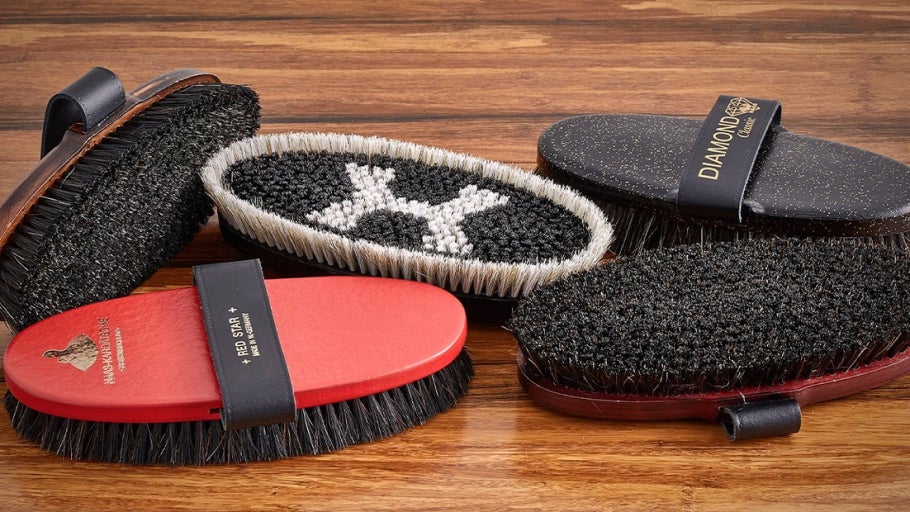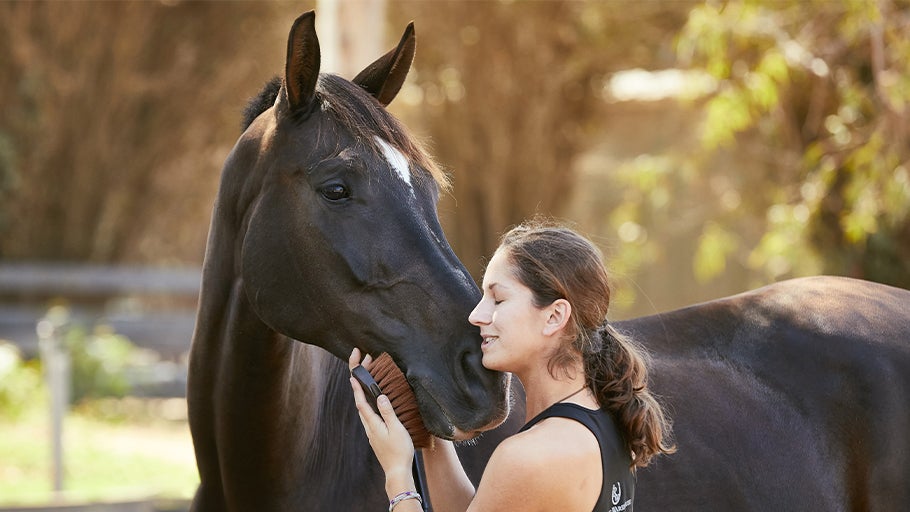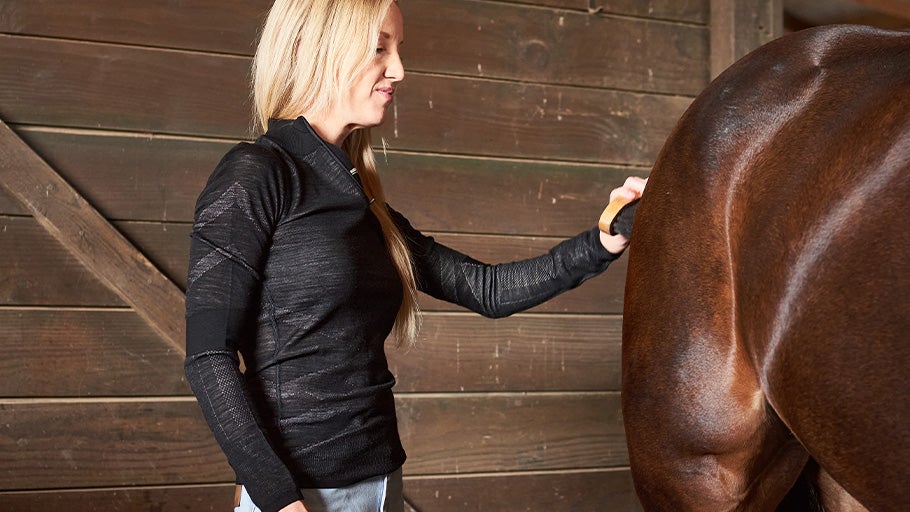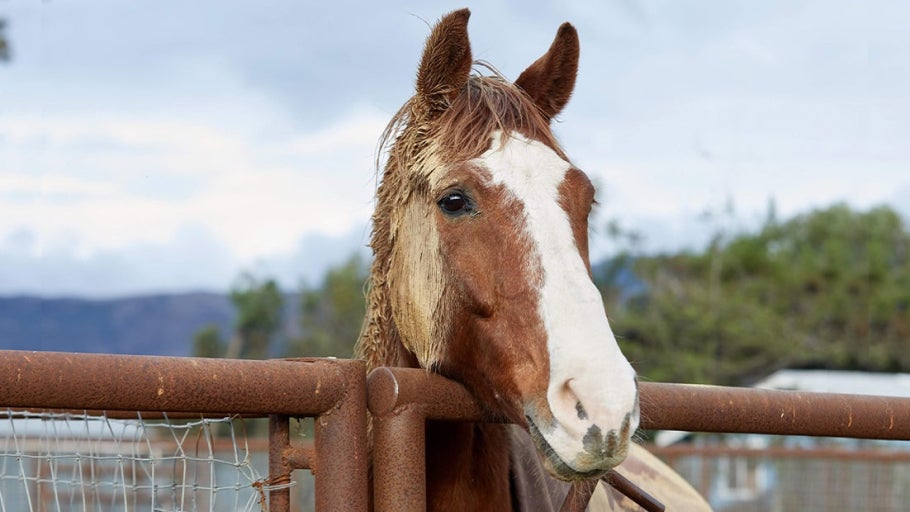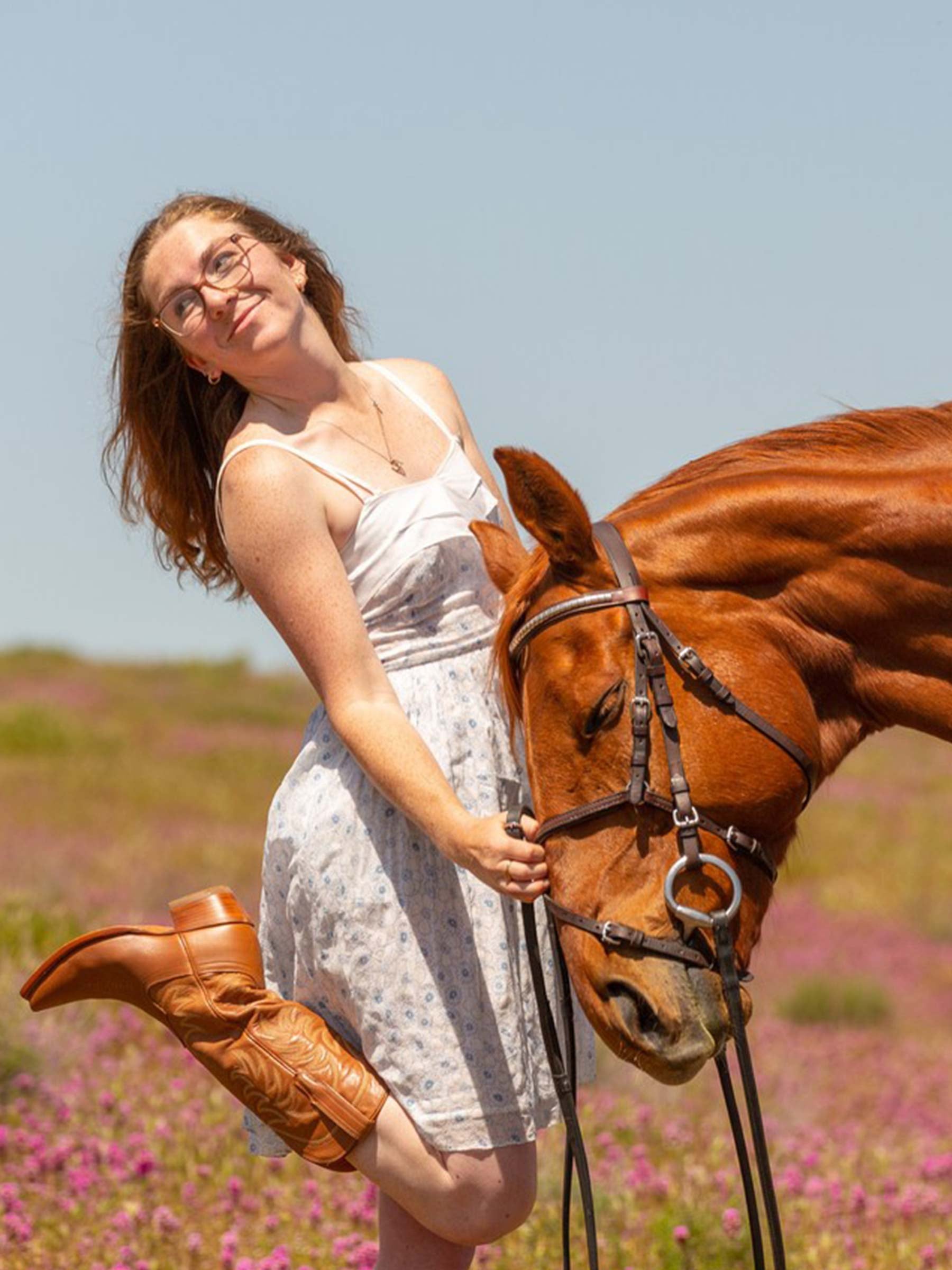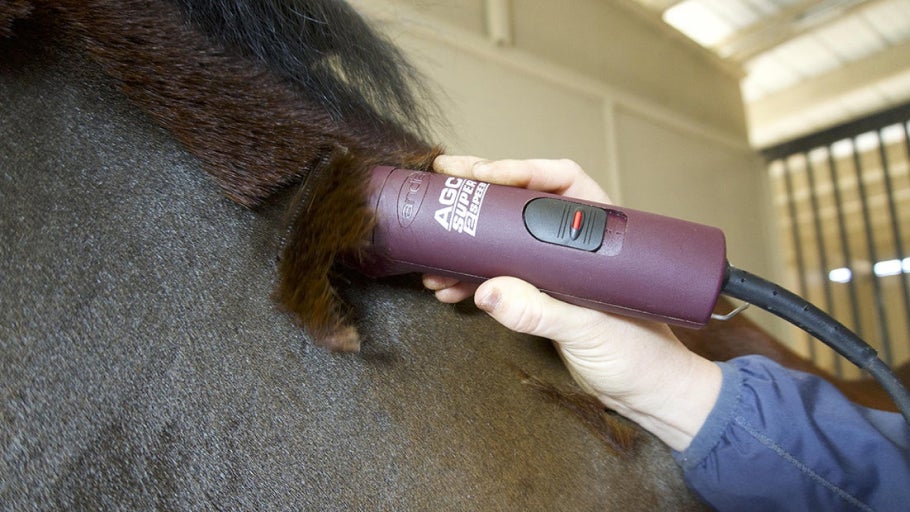
Horse Grooming Supplies Guide
When we think of what goes into riding horses, our minds often jump to what kind of tack we use or what sort of exercises we can incorporate in order to make progress with good rides; but a good ride and good partnership start on the ground.
No matter what discipline you ride, or even if you don't ride at all, horse care is integral for happy and healthy partnerships! Grooming serves many purposes and is something that comes naturally to horses and their companions. By grooming our horses, not only do we get a chance to clean them up, but we have an opportunity to bond with and get closer to them on a more personal level.
In this guide, we will go over why and when we groom as well as what tools should be included in your grooming kit. Do note that while all grooming kits should have a few basic items, there are always exceptions based on what you and your horse prefer. Without further ado, let's dive on in!
Why We Groom
We as riders and equine enthusiasts can use grooming time as an opportunity to make our horses aesthetically pleasing, check over their bodies for wounds or ailments, warm up their muscles for riding, scratch that impossible itch, and of course bond. Some specific benefits of grooming include relieving tension caused by mud clots pulling at the skin, increasing blood flow to the skin, helping coat health, and spreading natural oils around for a shiny pony!
When We Groom
Knowing why we groom is great, but when should we groom? Can you groom too much? Can you groom too little? Do you need to groom differently based on the time of year? Good questions. The most common time to groom is before and after we tack up and ride. This ensures the horse is as comfortable as can be before we layer tack on, so they are in their best shape for the work ahead!
Some horses are more sensitive than others and don't like grooming time as much. They may show signs of discomfort like biting, swatting you with their tail, pinning their ears back, twitching their skin, or pawing. If your horse acts like this during grooming time, you might need to experiment with some softer tools and pressure.
Even if you choose to combat your horse's distaste for grooming by grooming a little less, it is still important to keep it in your routine. Incorporating these full-body checks can make a big difference in your horse's health, such as finding a rock in your horse's shoe right after it happens versus having a lame horse with a stone bruise.
Winter Grooming
Your grooming routine is especially important in the winter months with more extreme weather. Maintaining hoof health in the winter can be a preventative game if played right; if you leave your horse to the elements and excess moisture with little upkeep, they are more susceptible to conditions like thrush or abscesses (which can quickly insert themselves into your horse's ecosystem and cause painful problems). For a deeper dive into winter grooming, check out our Winter Horse Care Tips!
Also relevant during the winter, some riders choose to clip their horses while others keep the hair all-natural. Regardless of hair length, you will most likely have to dedicate more time to daily horse grooming during the muddy months. Your horse will greatly appreciate it! If they are wearing a horse blanket for most of the day, they are likely to be itchy and will need some help scratching.
Summer Grooming
Post-winter, equestrians deal with the shedding out process. While it might be a hairy situation, it is pretty straightforward! Best practices for a shedding horse coat include currying, currying, and more currying. Our horses are itchy from all the dead hair that is layered on them, so using a de-shedding tool and curry combs is an easy way to help their coat.
Once spring transitions into summer and the horses are shed out, there are new coat health considerations to keep in mind: one being sun damage. Some riders choose to combat this by using a light fly and summer sheet that provides protection against both bugs and UV rays. Not only does this help with coat bleaching and lightening, but it keeps the horse clean from dirt.
Additionally, riders should keep an eye out for bot fly eggs in the warmer months. These small yellow or black eggs mainly show up on a horse's legs and shoulders, with the goal that the horse will itch and consume the eggs. Once the horse has consumed the egg, it ages into a larva and steals nutrients from inside the horse until it is pooped out, where it turns into an adult fly and repeats the process by laying eggs on another horse. To remove botfly eggs, riders can use a botfly knife to scrape the eggs off the hair. For more tips and tricks on fighting flies, be sure to check out our fly control guide!
Grooming Kit & Tools
Depending on whether you are grooming one horse or multiple, your grooming kit will differ. Each grooming kit should have the same essential items, though brush styles and characteristics (such as bristle stiffness) can be unique to cater to our horse's special needs. Below, we will address the basic items that every grooming kit should have.
Common Grooming Kit Tools
Hoof Pick - The hoof pick is arguably the most important tool in your grooming kit. Used to remove rocks, dirt, and anything else from the horse's feet, a hoof pick is integral for a comfortable horse. Many hoof picks also feature a stiff bristled brush that can be used to clean the inside and outside of the hoof.
Curry Comb - The curry comb is the first item you should use on your horse's body. It helps to loosen dead hair and dirt, as well as massage muscles and increase blood flow. To use it, hold the brush and work it in small circles to bring debris to the surface.
Dandy/Hard Brush - The hard brush is used following the curry comb and is great for removing debris loosened by the curry. It can be effective against hard mud clots and stains, especially on the legs. Plus, it can be used for manes and tails in conjunction with a detangler.
Medium-Stiffness Brush (Conditional) - Depending on your horse's sensitivity level, a medium-stiffness brush may work as your soft or hard brush.
Body/Soft Brush - The body brush is used after the hard brush and is often referred to as a finishing brush. It collects any straggler loose hairs and spreads natural oils, leaving the coat smooth and shiny.
Mane and Tail Brush - The purpose of the mane and tail brush needs little explanation, but the method for brushing with one is important. You should try to always use a detangler or conditioner in your horse's mane and tail prior to brushing it to avoid pulling out hair. Once your detangler is applied, wait a minute or two and then begin brushing your horse's hair from the bottom up. Holding the mane and tail near where you are brushing prevents you from pulling on their neck or tailbone, which makes the brushing process much more comfortable for the horse!
Other Grooming Kit Tools
Grooming Tote - This is what you will keep all of your grooming tools in. Some riders like to use something as simple as a wash bucket, while others may prefer a tote with a mesh bottom to help keep dust from building up.
Shedding Tools - Shedding tools are great to have on hand for those hairy horses! These tools are made to remove dead hair that is ready to come off. When horses are shedding their winter coats (or have a condition like Cushing's), the amount of shed can be overwhelming; shedding tools make the hair easier to manage.
Rub Rags & Grooming Mitts - Rags and soft mitts are multipurpose items. For some horses, it functions like a regular washcloth; for others, it's the only way to put fly spray on. Whatever the reason, having a washable and reusable cleaning tool is great.
Mane Trimming Tools - If you like a short mane, you need some tools to help with the upkeep. For riders who want a pulled mane, a pulling comb is classic, but the look can be achieved with thinning shears or other bladed tools.
Hoof Dressing - Hoof dressings are a fun way to not only make your horse look like a million bucks, but to help their hooves feel like a million bucks too. Depending on the type of hoof dressing you get, it can help to harden the hoof, add moisture, or work against bacteria and fungi.
The Grooming Process: Start to Finish
Now that we've covered why we groom and what we use to groom, we can go over how to groom your horse! Depending on what your equestrian facility has to offer and what your horse is okay with, step one is to safely secure them and grab your grooming tools. Riders often use a quick-release knot to tie up their horse, so they can quickly untie the horse in an emergency—preventing a dangerous situation. To help keep yourself safe, it is important to let your horse know where you are during grooming by talking or touching them with a gentle hand as you're going back and forth between their sides.
Hooves
Once you and your horse are settled and comfortable, a good place to start is picking and cleaning the hooves. To pick up a front hoof, stand at the horse's shoulder facing toward their tail with your hoof pick in your outside hand. Bend over while running your inside hand down the back of their leg until you get to just above their fetlock joint. Many horses know this as the cue to pick up their leg, but if they are unfamiliar with the cue, give a gentle squeeze until they pick it up.
Once the hoof is up, use your hoof pick to clear the grooves and sole of any dirt and debris. Even though some hooves seem as hard as a rock, still be gentle as this can be a sensitive area for the horse. Gently set the hoof back down on the ground and move on to the next hoof. The process for picking up the hind feet is the same. After picking all the hooves, you can use a hoof oil or conditioner on the outside wall and sole.
Body
Once the hooves are clean, you can move on to cleaning your horse's body. Start with a curry comb to loosen any dirt or dead hair, moving the curry in circular motions around the horse's body. As mentioned before, this helps with dirt and hair but also increases blood flow and makes the horse's coat shinier.
Once you have thoroughly curry combed your horse, use your hard brush to remove clumps of dirt and hair. Brush with the direction of the hair so the coat lays smooth when you're done grooming. After you've finished with the hard brush, go in with your soft dandy brush to smooth the coat and spread natural oils. Again, brush in the direction of the hair!
Take note of sensitive spots on your horse. For example, if you brush around their girth and they pin their ears, that is a sign that you need to be lighter in your touch to keep them comfortable.
Face
Now you can groom the horse's face by gently brushing with a soft brush, a face brush, or by using a sponge or washcloth. When doing this, make sure you are extra gentle around the eyes, nose, mouth, and ears. Horses are quick to judge whether they like something or not. If you are rough and they become averse to grooming, it will be hard to get them clean in the future.
Mane and Tail
After grooming the body and face, you can brush your horse's mane and tail. This step isn't necessary for daily grooming, since tack doesn't layer over the mane or tail. Use your mane and tail brush by starting at the tips of the mane and working your way up to the crest. You can use a detangler on the mane, but be aware that it might become slippery if you try to hold it while you ride.
For the tail, douse it in detangler first. Then, grip the tail near the bottom with one hand, and gently start brushing the very end of the tail. The reason you hold the tail is to prevent pulling on the horse's tailbone as you brush. Keeping this same motion, work your way up the tail toward their dock. Once there are no tangles or knots in the tail, you are done!
Finishing Touches
Now that all of the basic steps are done, you can finish your grooming session with extra touches like a coat conditioner spray, fly spray, or maybe even a braid or two! It's always a good idea to do a final pass over to double-check for cuts or any missed spots that can easily be taken care of.
Frequently Asked Questions
Why should you groom your horse?
Grooming can help catch cuts and ailments on your horse, relieve skin tension, scratch their itches, and help you bond!
How often should you groom your horse?
You should groom your horse every day, or at least before you ride them if everyday grooming is not feasible with your schedule. Cleaning the hooves is very important and can prevent lameness, so it should be prioritized in your horse care. Pay attention to signs of sensitivity while you groom, as this may indicate whether you are grooming too much or too hard for their personal preference.
What tools do I need to groom my horse?
The basics you need are a hoof pick, curry comb, hard brush, soft brush, mane and tail brush, and detangler. You can also use washcloths, sponges, and oils to get an extra level of cleanness. Any additional grooming items are extras for your kit!
What is the correct order of grooming my horse?
First secure your horse safely, either with cross ties or by tying them with a quick-release knot. Begin with the hooves, then move onto the body using the curry comb, hard brush, and soft brush, then use detangler, then finish with the mane and tail brush. This is the basic order of grooming, but more steps can be added depending on the tools you have or specific needs like de-shedding.
When should I bathe my horse?
Riders typically bathe their horses before a show to make them extra clean. Other riders like to bathe their horse after a long, hot ride in the summer, since they are sure to dry off before the sun goes down. In winter, it is only a good idea to bathe if you have ample time for the horse to dry before putting on a blanket. Otherwise, your horse can get too cold and have a hard time getting warm again if they are still wet. We invite you to take a look at our Horse Bathing Supplies Guide to learn more about bathing tools!
Closing Thoughts
The time spent with our horses is always special for us, but we want to make it special for them too. Grooming is a wonderful experience that can help horses release tension and feel comfortable in their body and brain. In group living situations, horses often groom each other and embrace this herd-bonding activity. In instances where humans are the only herd members available to do this grooming, it's crucial to embrace the role and groom away! We hope this guide helps you to better equip yourself for your grooming endeavors. If you have any questions, please reach out to our customer service at 1-800-620-9145 or info@ridingwarehouse.com. Happy grooming!
Related Articles

